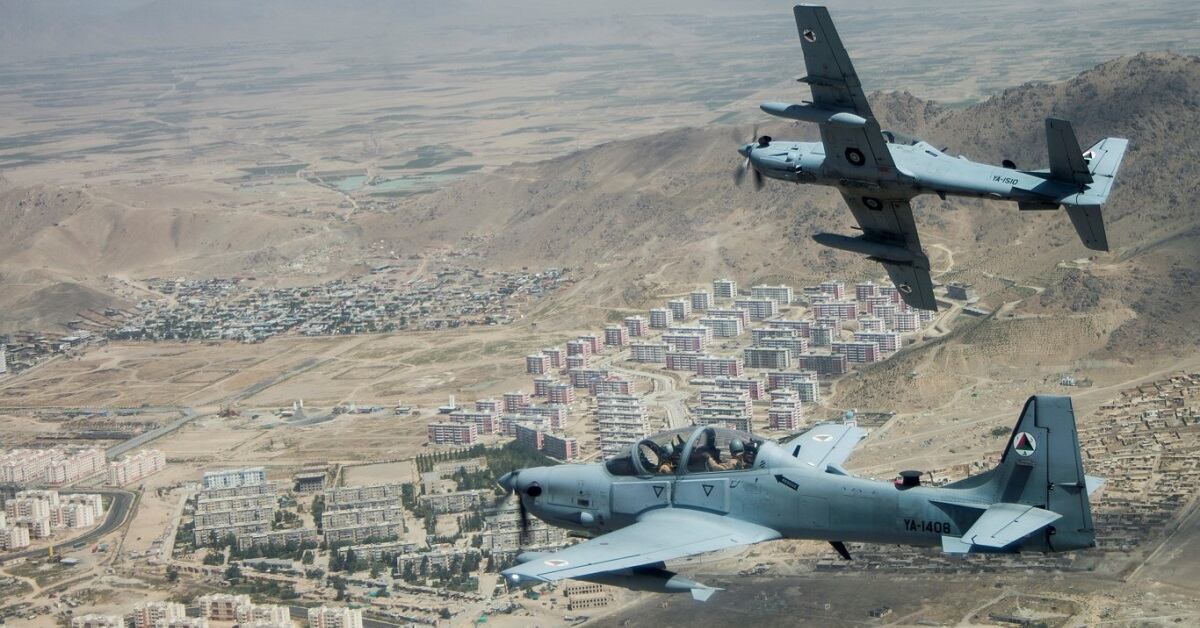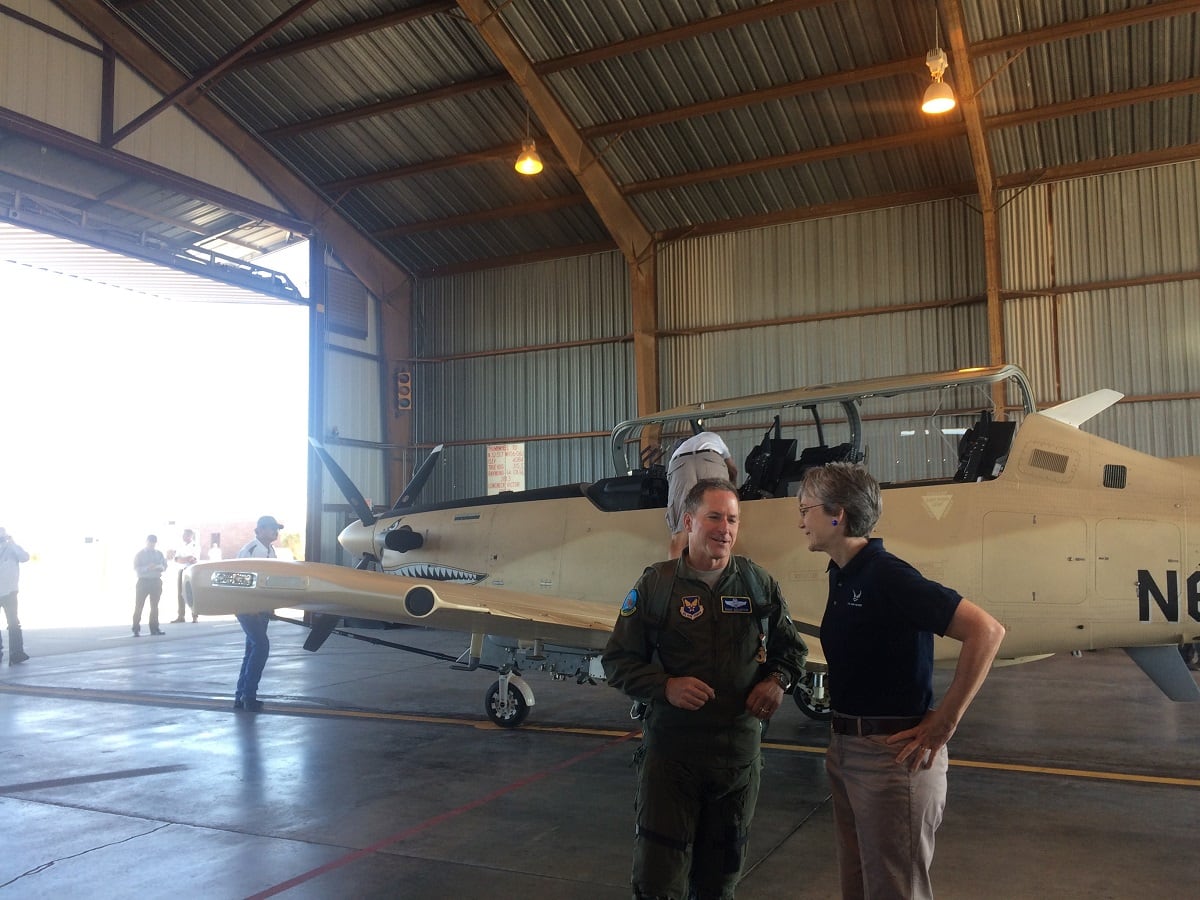NEW ORLEANS — Many have interpreted the Air Force’s OA-X light-attack experiment as something solely focused on acquiring a cost-effective close-air support aircraft for U.S. forces entangled in low-intensity conflicts.
But in reality, the program is also being crafted to increase the capabilities of partner nations across the world.
When a nation wants to join the United States in operations against insurgent forces, but can’t afford a high-end fighter aircraft, a light-attack plane coupled with an information networking package is what the U.S. Air Force can offer them, according to Chief of Staff Gen. Dave Goldfein.
"That platform — a small, commercial, off-the-shelf [aircraft] — we actually already have those,” Goldfein told Air Force Times. “If I hear one thing from my international air chiefs, it’s ‘we need to figure out how to share information both ways.’ ”
The real question, Goldfein said, is: “How do I improve my ability to share with folks who now join us so they can strengthen not only our military capability but our moral authority?”
Goldfein’s been making the rounds, sounding the alarm and highlighting the future of armed conflict for which the Air Force must prepare. The next big war won’t be decided strictly by hardware; it’s going to be about which nations can quickly and efficiently share intelligence with all their allies and among their own military services.
RELATED

“So, for me, with the light-attack experiment, I’m just as interested in the information sharing and intelligence gathering," Goldfein said.
The light-attack experiment is down to two platforms: Textron’s AT-6 Wolverine and the Sierra Nevada-Embraer A-29 Super Tucano.
To address Goldfein’s vision of integrating U.S. allies across domains, both platforms are testing the integration of a network that allows the United States to share unclassified data with partners.
“There’s something we call Aeronet, which is again a commercial, off-the-shelf [product] that connects these platforms, sensors and weapons together and provides a digital network for light-attack [aircraft]," Goldfein said. “It’s very affordable and infinitely shareable.”
The information sharing capability that will emerge could mirror Special Operations Command’s “Operation Gallant Phoenix,” according to Goldfein.
Under that program, intelligence is gathered and shared with trans-regional allies to prevent the flow of foreign fighters fleeing the crumbling Islamic State group. Information from Interpol and the intelligence agencies of various partner nations is strung together to track that flow of militants.

“[Gallant Phoenix] is where our strategy of working by, with and through allies helps take the load off us,” Defense Secretary James Mattis told Congress in June 2017. “For example, Singapore has offered [intelligence, surveillance and reconnaissance] aircraft to the Philippines. That is the way we need to get everybody working together out there against this threat and not carrying the full load ourselves.”
Using allies to share the burden and optimizing publicly available information, like social media, is where Goldfein wants to drive the light-attack experiment.
“I don’t know yet how much international interest we’ll get, but I’m hoping we’ll get a lot,” he said.
Goldfein cautioned that he was unsure how many light-attack aircraft the United States would ultimately buy for its own use, while reiterating that the focus for him is pushing the light-attack aircraft out to partner forces to maintain the campaign momentum against violent extremism.
“That’s everywhere from the Philippines to Nigeria," he added. "Then there’s also the business of how does it improve [U.S. military] readiness. If I have a weapon system that has that networking and information sharing ... does it free up my higher-end assets so I can focus on the near-peer threat?”
RELATED

That gets to another one of Goldfein’s main points: "if you want to embolden an ally or partner, one of the best ways to do it is to share information.”
“We want to share as much as we can, because we’re in this together,” he said. "Remember, building partner capacity is a two-way street. We also need to be humble enough to remember that, with some of these other countries, we can learn as much from them as they can from us.”
Partner nation intelligence agencies often have access to existing human intelligence networks, and of course, they already understand the terrain of their home countries.

"They are going to have insight and we have to be open enough and humble enough to make sure we’re paying attention to them.”
As it stands, the U.S. information sharing architecture is set up to prioritize intelligence sharing among U.S.-only forces, first and foremost, followed by nations with which the U.S. military has special relationships. That system perpetuates a U.S.-only intelligence node, rather than a network used by a coalition of allies.
Changing that will be as hard culturally as it will be technically, Goldfein said.
“It’s almost like virtual Concertina wire and that model actually doesn’t lend itself to the kind of fighting we do," he added. "What you really want to do is flip that and go coalition at the core and share as much as you can and then start limiting as you go outwards. That outer ring, only where you have to, is where you go U.S.-only. ... So we need to build the [command and control] network that allows us to do that.”
Kyle Rempfer was an editor and reporter who has covered combat operations, criminal cases, foreign military assistance and training accidents. Before entering journalism, Kyle served in U.S. Air Force Special Tactics and deployed in 2014 to Paktika Province, Afghanistan, and Baghdad, Iraq.




